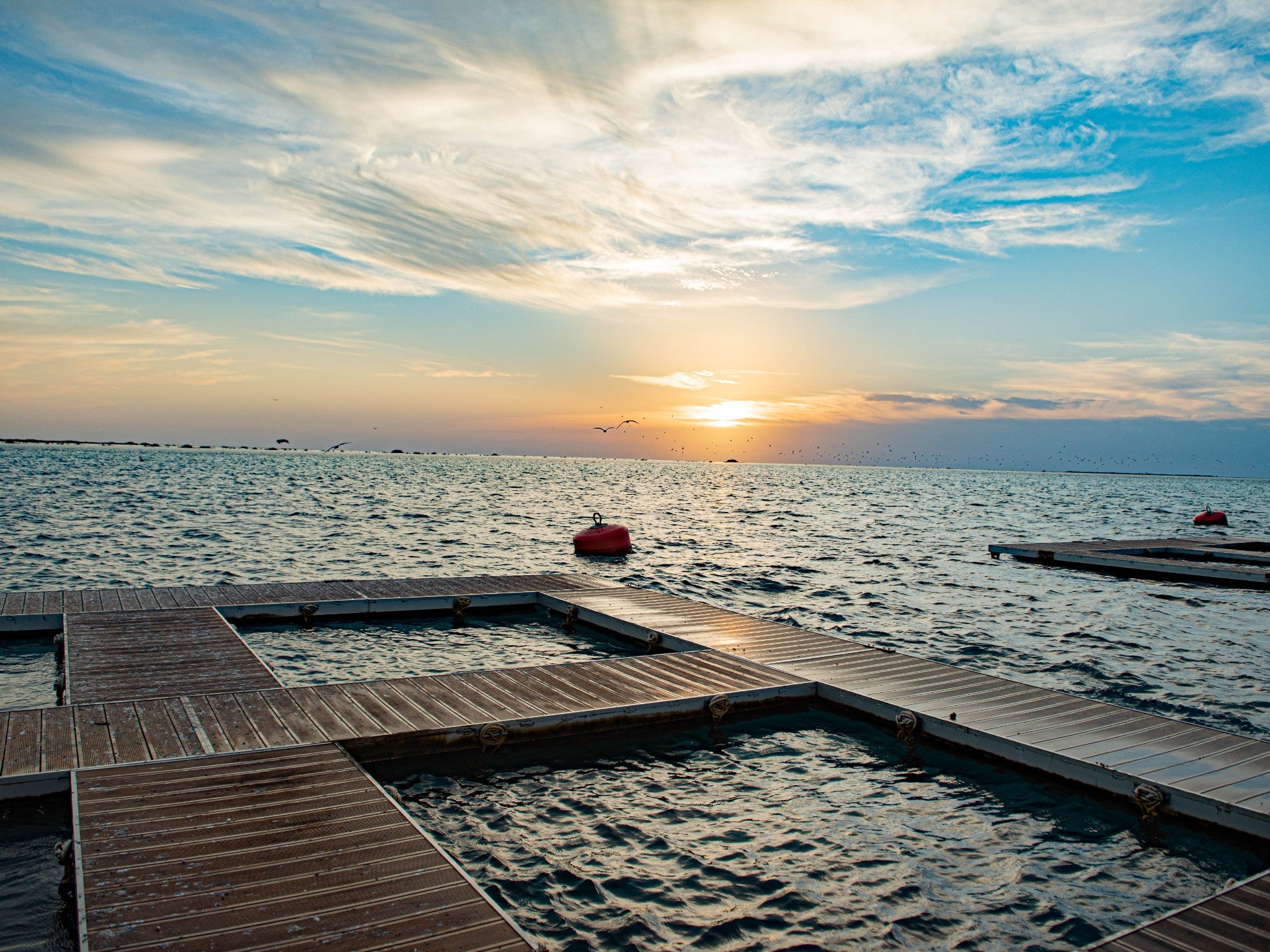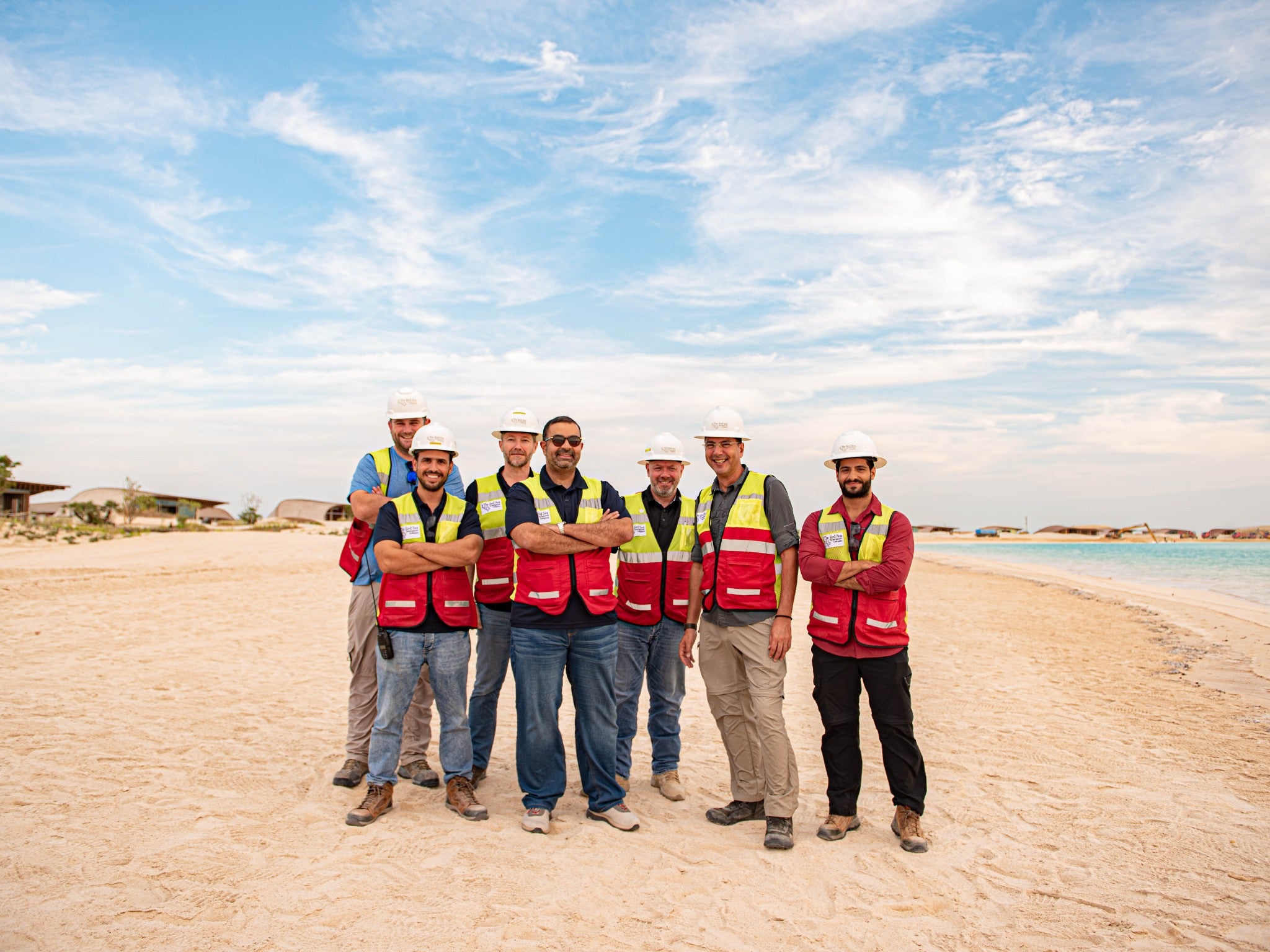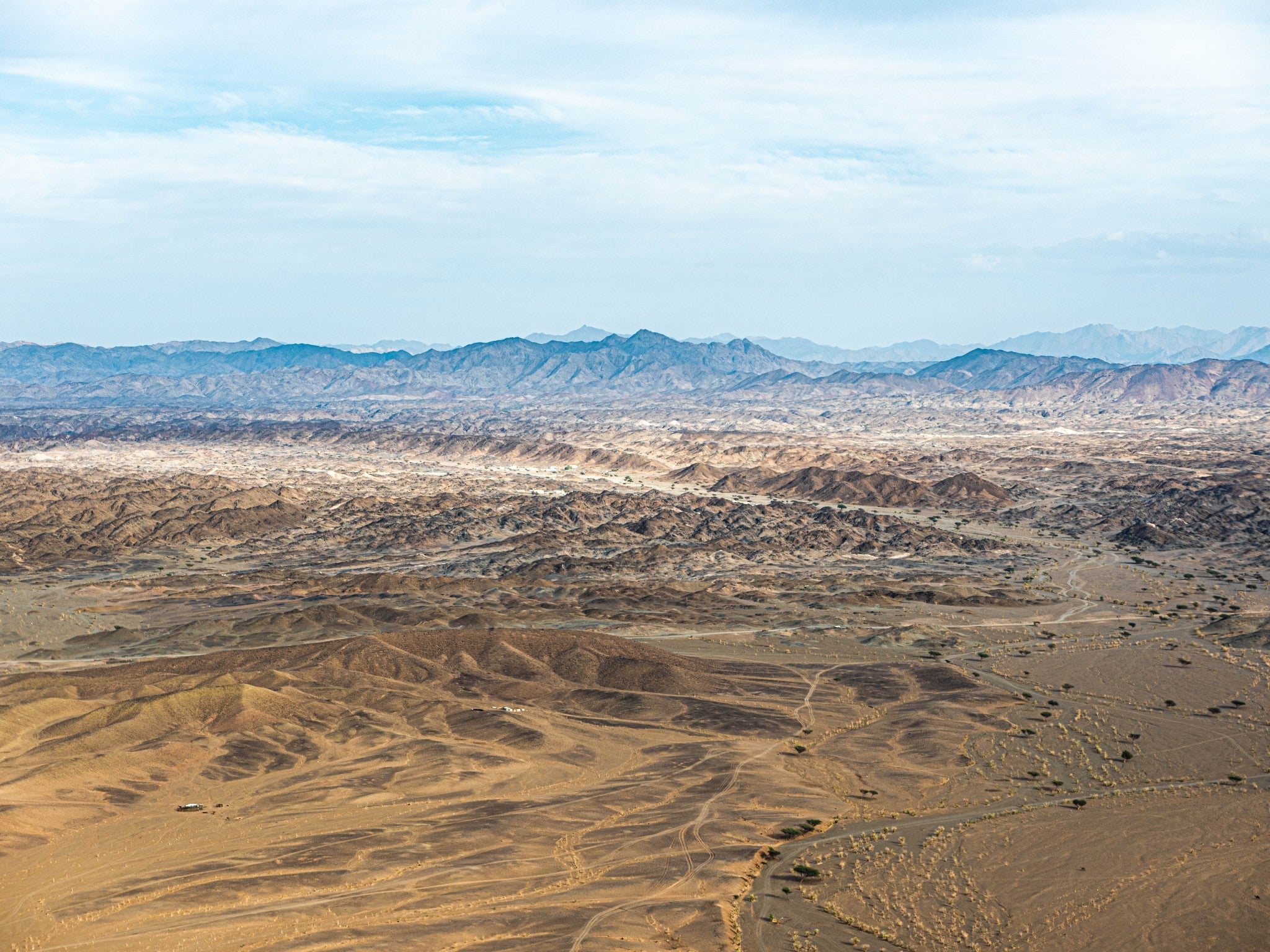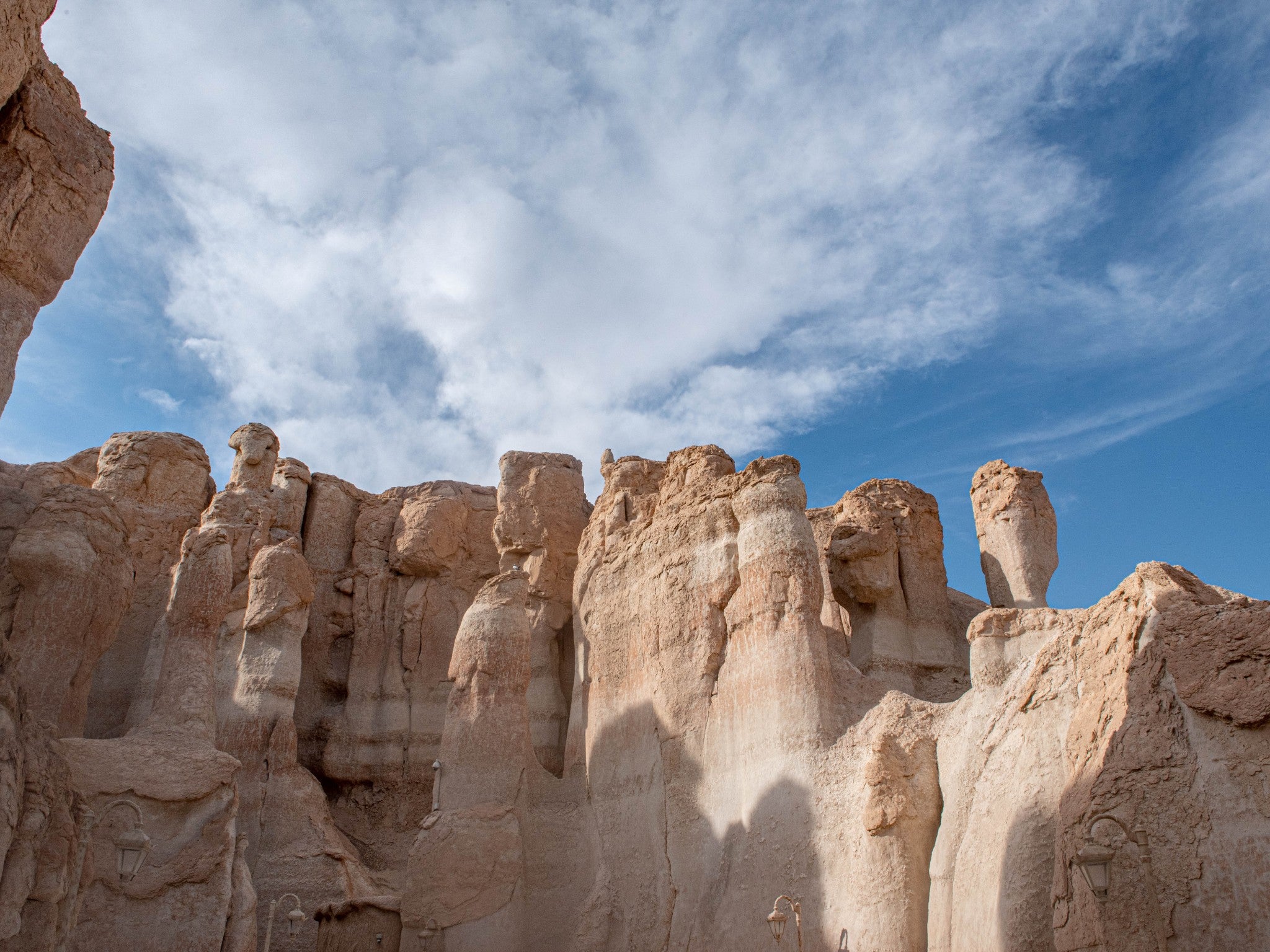
Six years ago, Saudi Arabia announced Vision 2030, a set of reforms designed to open up the country and diversify its economy. In tandem, the Kingdom has made a series of ambitious pledges on the climate, which aim to cut emissions and protect the environment. On a recent trip there, I wanted to see how the Saudi Green Initiative was taking shape – and to discover how building new tourist hubs can be done sustainably.
On the first day, we journeyed up the Red Sea coast to Turtle Bay, the headquarters of Red Sea Global. The development company is currently building what they say will become the largest resort in the world powered entirely by renewable energy. The first three hotels on the site will open in Spring 2023.
The unspoilt shoreline is a far cry from the clichéd pictures of Saudi Arabia – high rise buildings overlooking marinas and miles of arid desert. Here, turquoise lagoons and corridors of clear water appear between islands, coloured green with shrubs that spill into the sea.

The coastline is home to hundreds of coral nurseries. The coral here has evolved in tandem with the hot summers, adapting to warm temperatures and withstanding them in ways the Great Barrier Reef in Australia cannot. This resistance to coral bleaching – common in many reefs due to the imapct of the climate crisis – fascinates marine biologists, who’ve come from all over the world to contribute to the project.
Dr Pamela Neubert, who heads the environmental operations team, took us out on a boat to visit the nurseries at sunset. “We’re trying to see if we can isolate a gene or strain responsible for this resistance and see if we can replicate it in other reefs through coral hybridisation,” she explains.
The scientists on Dr Neubert’s team believe they are on the verge of something groundbreaking. John Pagano, CEO, says he is inspired by the company’s regenerative mission. “We initially promised to increase the net conservation value of the land here by 30 per cent,” he says. “I’m excited to say we’re now looking to surpass that.”

After a few days on the west coast, we travel across the country to al-Ahsa, where efforts to transform a park into an oasis revealed a different set of ambitions and challenges. Established in 1962 to prevent the desert sand from creeping over the area from cities and villages, the park is now part of a wider natural reserve. On the edge of it, the Asfar Lake stretches outwards for miles; at dusk, the sun disappears into its reflection as the sky turns red, then purple, then black.
Surrounded by dunes, the “Yellow Lake”, as it is nicknamed, is the largest body of water in the Arabian Gulf and lies at the heart of a shallow wetland where, twice a year, migrating birds settle along the banks, bringing to life a landscape that was once a desert. Recently introduced hunting bans are helping threatened species recover while other projects have reintroduced the Arabian oryx, Nubian ibex and Arabian leopards to the desert.
Saudi Arabia is creating new ecosystems from scratch. Part of the key missions for the Saudi Green Initiative is the planting of 450 million trees by 2030, transforming a barren landscape into a lush haven. The Yellow Lake is a case in point, using primarily agricultural water to create a microcosm among the dunes. Meanwhile, in the Red Sea, the development company is building new islands alongside those that already exist. Some will flinch at the sound of such artifice – manufactured ecotourism that interferes with the natural landscape. But interference does not have to mean despoliation.

For centuries, port towns like Jeddah have grown outwards into the sea. When we visit the old town, snaking through ancient alleyways and sloping side streets in a golf kart, our guide, Sami Nawar, explains: “A thousand years ago, the sea was here.” As we took in the striking houses built in Rawashin style, blending Arab, Ottoman and Persian influences, I realise that artifice is not always the dirty word it is often make it out to be.
As seen on the intricate patterns of each door or window in Old Jeddah, this is a culture interested in imprint and craftmanship, in the marking of passage and time. In the sinuous passageways of the al-Qarah Mountain, one of our final stops, conservationists have preserved inscriptions in caves that are thousands of years old.
Known as the “mountain of whistling wind”, al-Qarah was once home to Bedouins – early ecologists whose understanding of nature was tantamount to survival. The rock formations of the al-Qarah Mountain look almost sculptural, shaped by layers of history. The past is alive and well in the hubbub of al-Hofuf, a nearby town, where tradesmen sell linen tunics in Souks near buzzing cafés and children chase each other around while their mothers play Baloot on stoops.

Moreover, the plentiful dining options offer travellers a taste of local cuisine: Shawarma, meat skewers slow cooked in all their juices; Kabsa, the national dish cooked with mixed rice and chicken; and Ma’amoul, dome-shaped cookies filled with pistachios, walnuts and dates.
At Red Sea Global, Mr Pagano and his team are building more than a wildlife sanctuary; they are leasing a lifestyle steeped in heritage and community. A village, complete with a school, a hospital and a mosque, is being built to accommodate citizens eager to live by the sea and embrace a sense of togetherness.
Boarding the flight home, I feel anticipation; an itch to return and see the projects once complete. As I drank my last Arabian coffee for a while, I had paused to think about all the people I’d met – scientists, professors, tour guides, builders, drivers and craftsmen – who will watch this transformation unfold.







